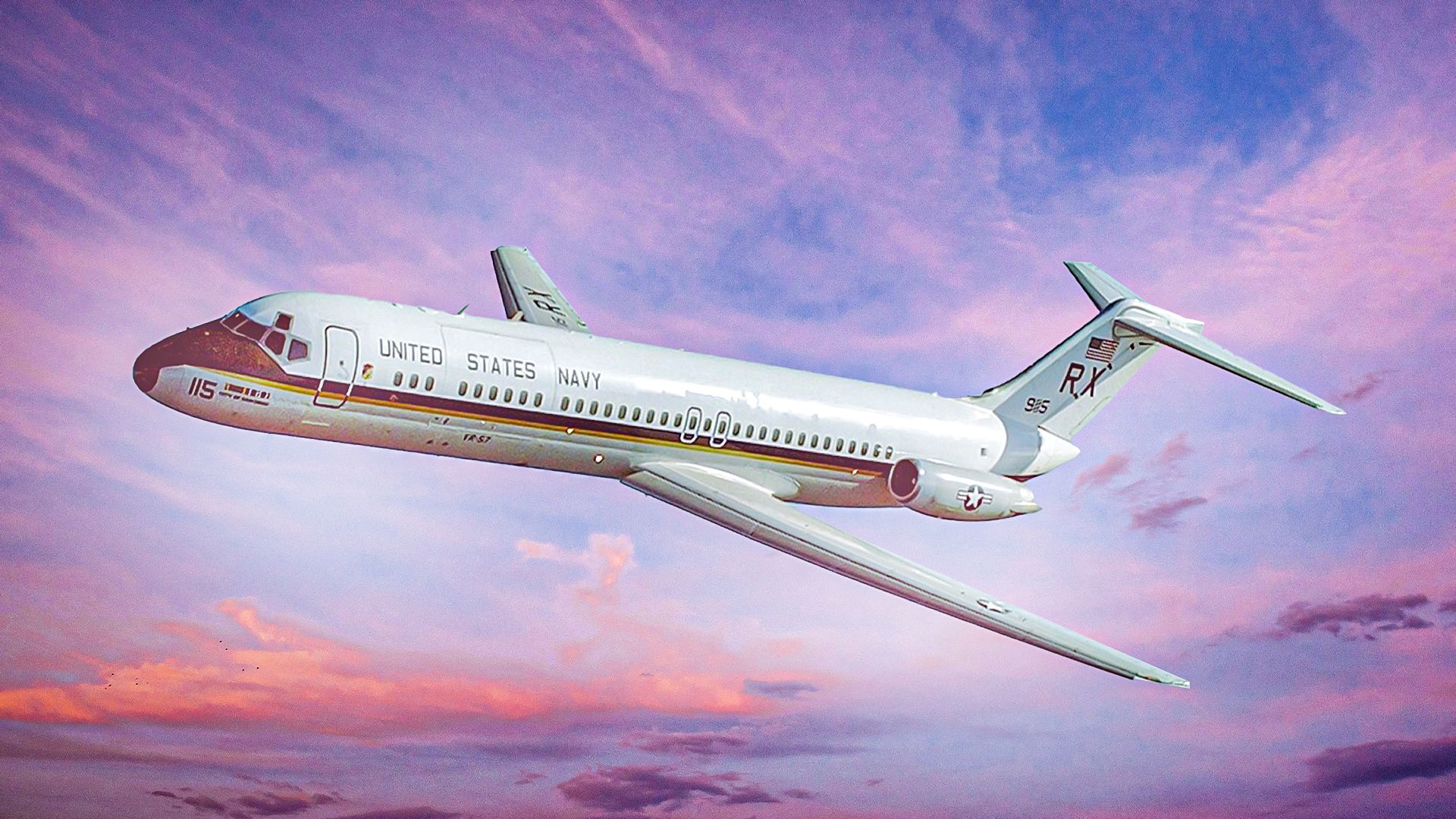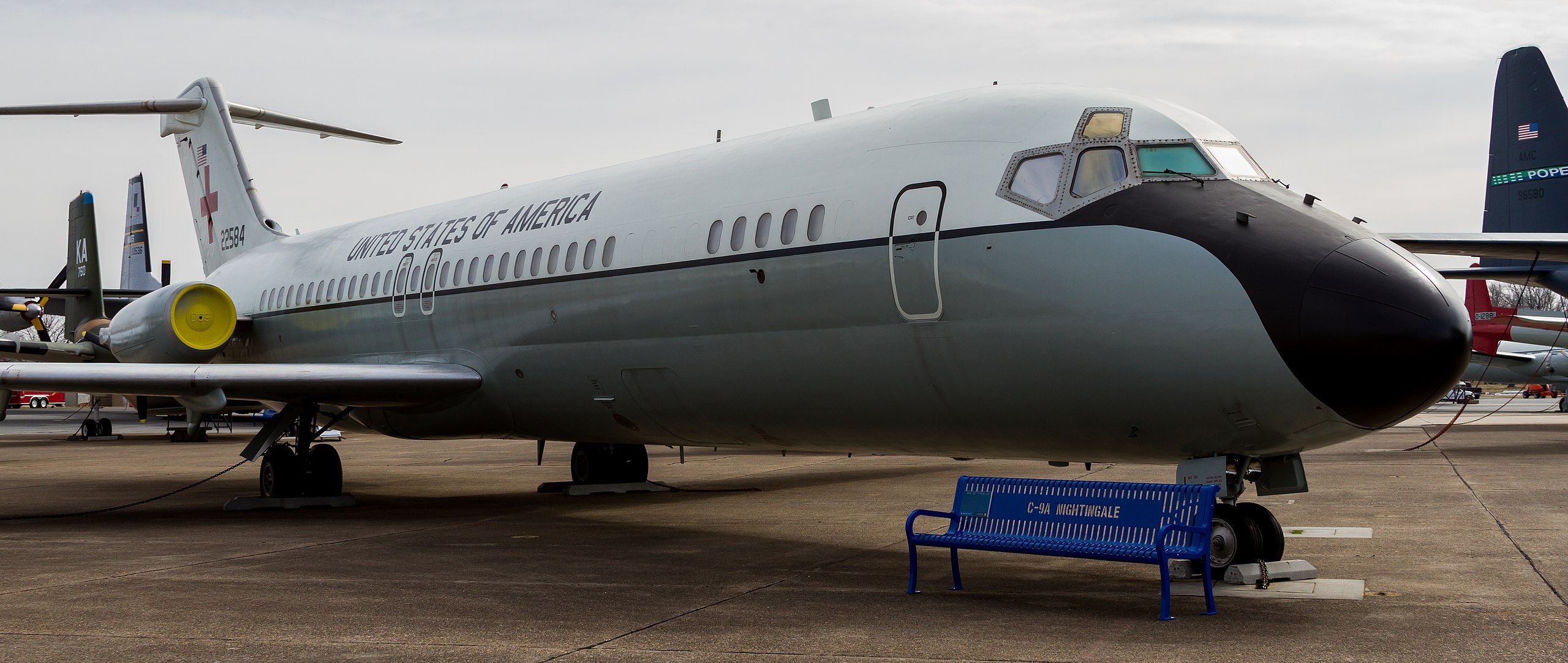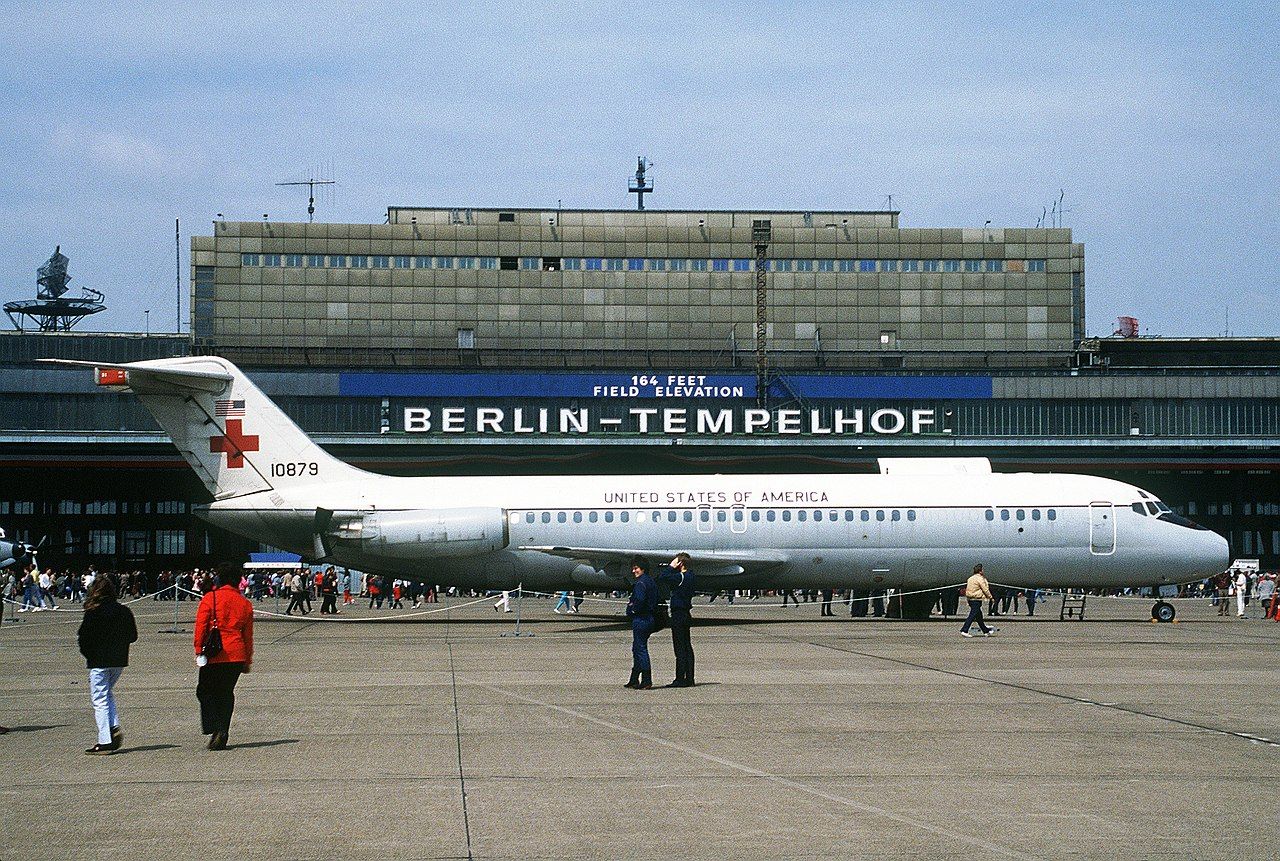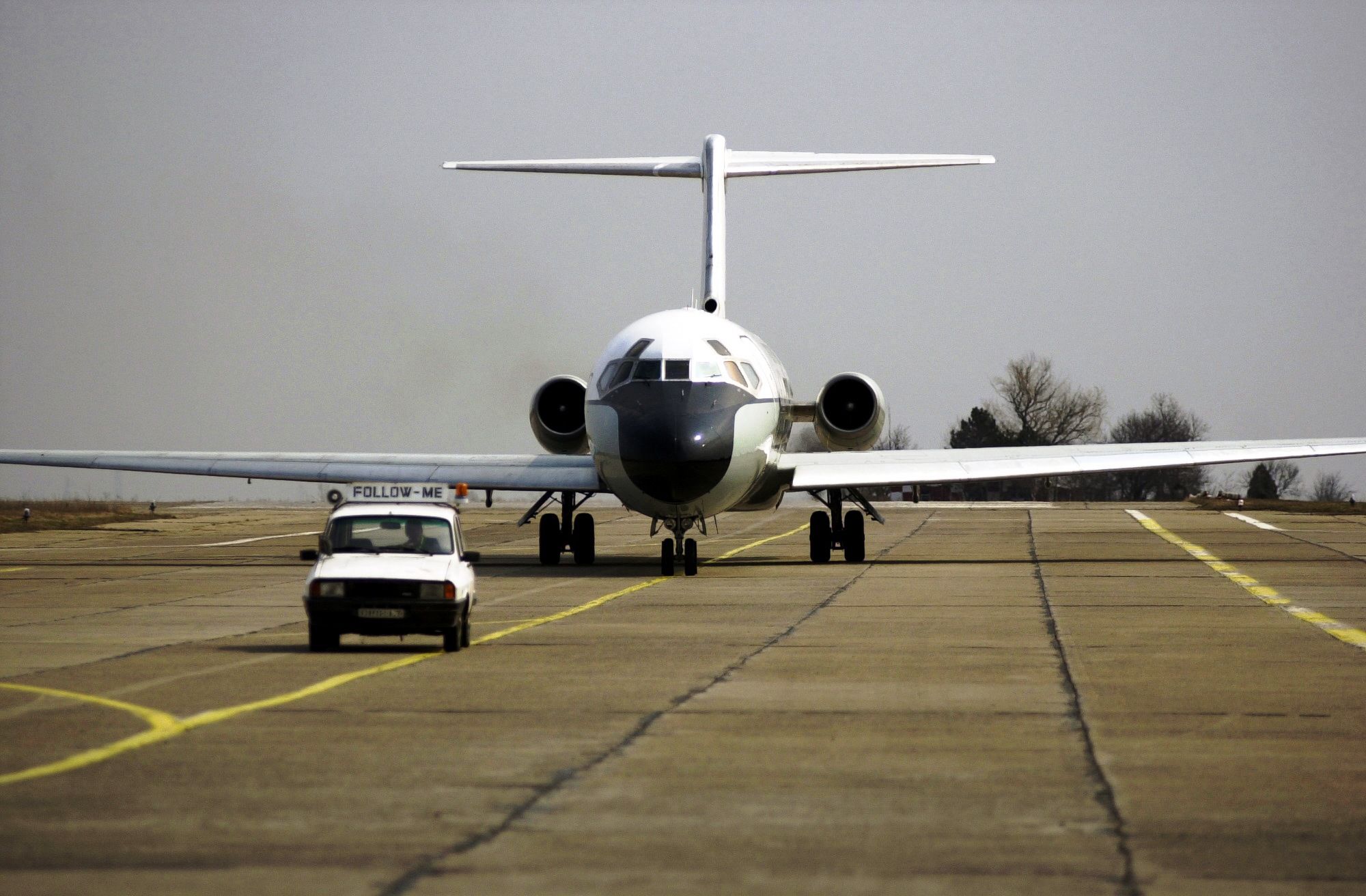Summary
- C-9A Nightingale was crucial for aeromedical evacuations with advanced patient transport capabilities.
- The fleet was heavily utilized for aeromedical and humanitarian missions, even to remote areas like Africa.
- The retirement of the C-9A was due to aging, deteriorating performance, and decreased patient transport demands.
The McDonnell Douglas C-9 is a retired military variant of the DC-9 commercial airliner. The type was produced in two major variants: the C-9A Nightingale for the United States Air Force (USAF) and the C-9B Skytrain II for the US Navy (USN) and US Marine Corps (USMC).
The C9-A Nightingale was primarily used for aeromedical evacuation for the USAF. Whether operated as an air ambulance to transport patients, support pallets, or other medical equipment, the C9-A was designed to perform the job. The C9-A Nightingale performed its final flight with the USAF in September 2005.
The C9-A Nightingale
| Powerplant | 2 × Pratt & Whitney JT8D-9 – 14,500lbs each |
|---|---|
| Length | 119 ft 3 in (36.40 m) |
| Wingspan | 93 ft 3 in (28.40 m), |
| Height | 27 ft 5 in (8.40 m) |
| Max. takeoff weight | 108,000 lb (48,988 kg) |
| Crew | Eight – Aircraft Commander/pilot in command, Co-pilot, Flight Mechanic, Medical Crew Director (MCD), Flight Nurse (FN), Charge Medical Technician (CMT) 2d Medical Technician (2MT), 3d Medical Technician (3MT) |
| Capacity | 40 litters or four litters and 40 ambulatory or any combination |
The C-9A is a highly modified version of the commercial DC-9 airliner designed for the movement of litter and ambulatory patients. The aircraft was powered by two Pratt & Whitney JT8D-9 engines, each generating 14,500 lbf of takeoff thrust. According to the Air Force,
“The C-9 was the only aircraft in the Air Force inventory designed specifically for the movement of litter and ambulatory patients. In place of the aircraft, other cargo aircraft have taken on the added job of transporting patients. New aeromedical technology, called patient support pallets, has made it possible to transport patients aboard aircraft not normally used for aeromedical evacuation.”
Apart from the USAF, the Department of Veteran Affairs and many civilian medical centers worldwide used the aircraft. It was one of the most versatile airplanes, in its applicability in the role and in-flight performance.
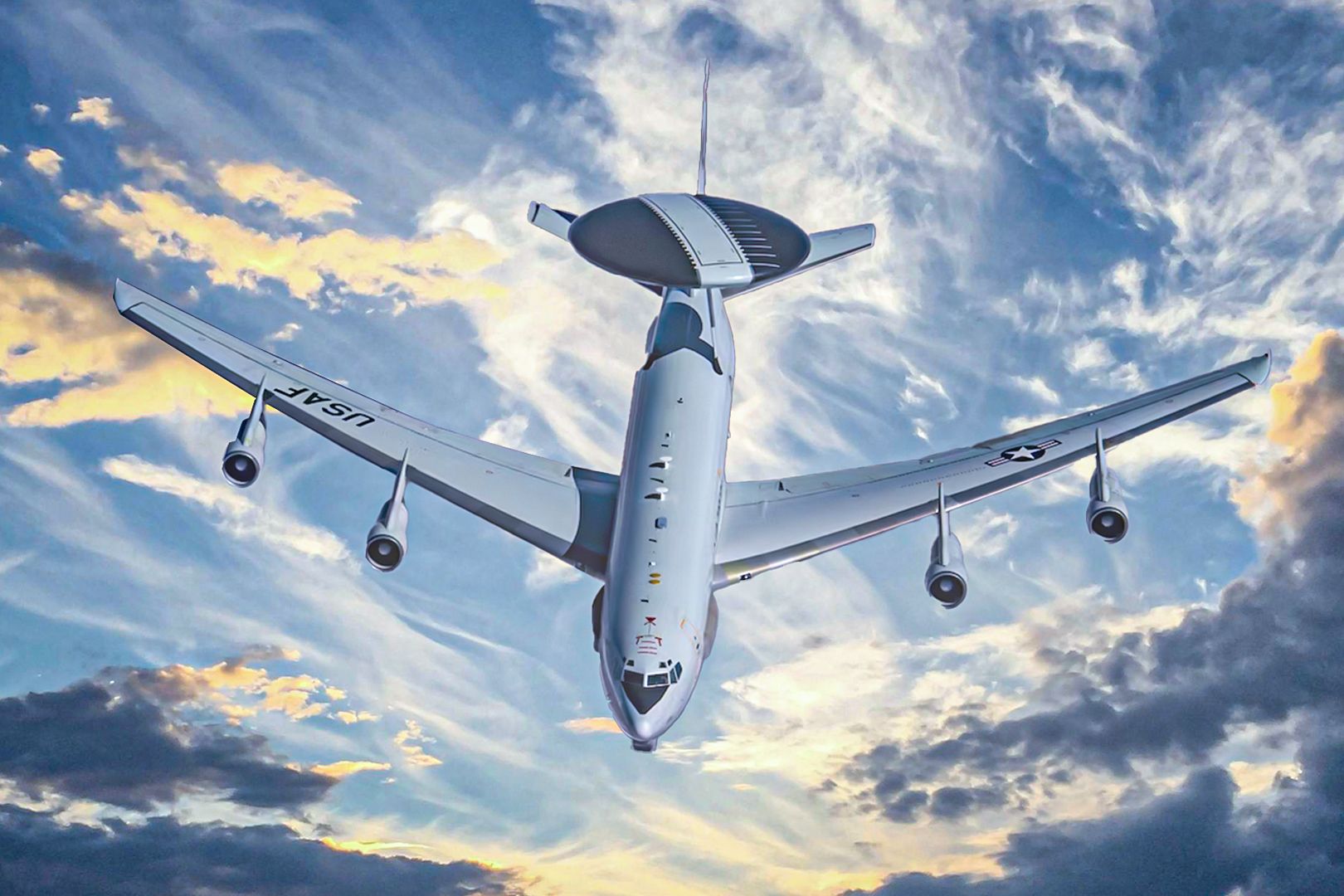
Related
How Does The E-3 Sentry AWACS Enhance USAF Command And Control?
Unlike JSTARS, AWACS is showing no signs of being ready for retirement.
Aeromedical missions
One of the pilots with the Air Force, Major Young, spent a lot of time performing aeromedical missions onboard the Nightingales. Despite being an old fleet, the aircraft was super reliable and successful in its mission. According to Major Young,
“It is an older aircraft but is very reliable. We’ve only had one mission in over two years where it was unable to get the distinguished visitor to his intended destination. Its primary advantage was its ability to rapidly turn on the ground. We can turn in 20 to 30 minutes compared to other aircraft that require up to an hour or more.”
| Maximum speed | 565 mph at 25,000 ft (7,584 m) |
|---|---|
| Range | 2,500 miles |
| Service ceiling | 37,000 ft (11,277 m) |
Other special missions
The aircraft was capable of performing other special missions to remote locations. The distinguished visitor compartment in the cabin provides privacy and comfort for passengers while having a large capacity for essential cargo. The cargo space was often utilized for humanitarian missions, including disaster relief, aid supplies, and others.
The aircraft featured plentiful space for extended missions in places as far as Africa. Major Young flew many missions to Africa, carrying DVs and other essential medicines and supplies. According to Major Young,
“Africa is a unique mission in the fact that it is still a remote location and the area is an extremely challenging environment to operate in — lack of navigation aid, poor runways, poor security, poor communications and lack of radar environment.”
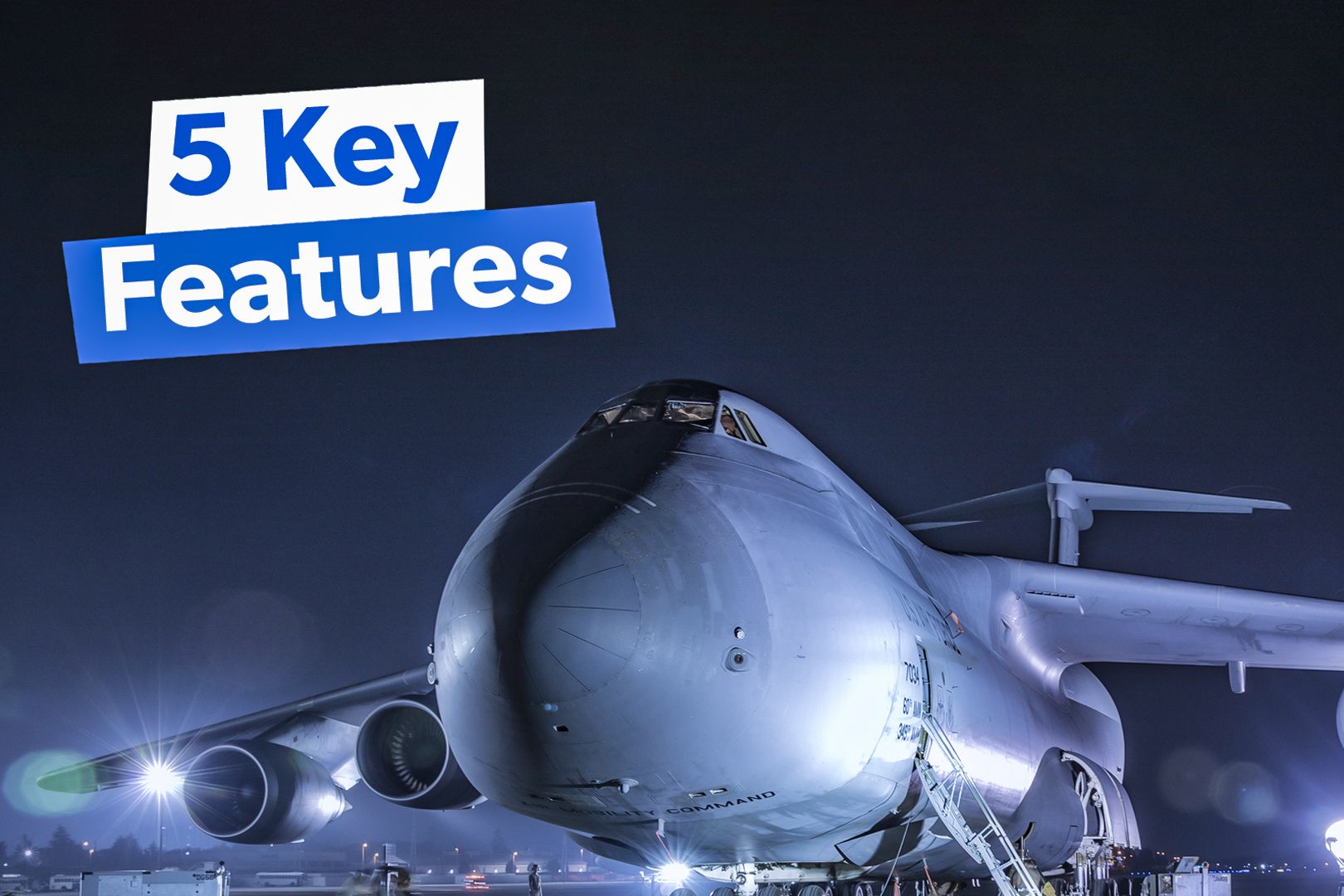
Related
5 Key Features Of The USAF Lockheed C-5 Super Galaxy
The C-5 has been serving the U.S. Air Force since 1970. The latest edition, the C-5M Super Galaxy, comes with a spare of improvements and upgrades.
The fleet retirement
In July 2003, the Air Force announced that the C-9A Nightingale fleet was retiring within the following few months. At the time, some Air Force C-9As were over 35 years old. While the primary reason for its retirement was aging, the aircraft and the engines had a constantly deteriorating performance. The loud and inefficient engines could not hold much longer, particularly in the era of efficiency and low emissions.
The Air Force noted that the noisy and inefficient engines required an expensive refit before meeting the authorities’ strict noise regulations. The age of the airframe did not permit retrofitting the engines. Moreover, the cost of upgrading outdated navigation and avionics equipment was significantly high.
The demand for patient transport had also decreased significantly, which did not justify maintaining a dedicated aeromedical fleet. The demand kept decreasing from 70,000 transports in 1995 to 15,000 in 2000. The agency also estimated the need for approximately 3,000 patient transports by 2005. With the advent of other means of transport, the reduction in patient numbers caused the retirement of the C-9A Nightingale with the USAF.
.jpg)
Related
Boeing T-43: The Modified 737 On Which USAF Navigators Learned Their Trade
For 37 years, the United States Air Force used converted Boeing 737-200s for navigator training.
What are your thoughts on the McDonnell Douglas C-9A Nightingale? Have you been lucky enough to spot one somewhere? Share your experience in the comments section.

